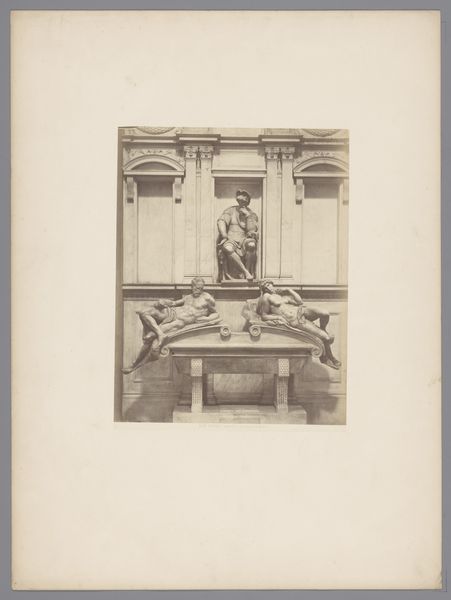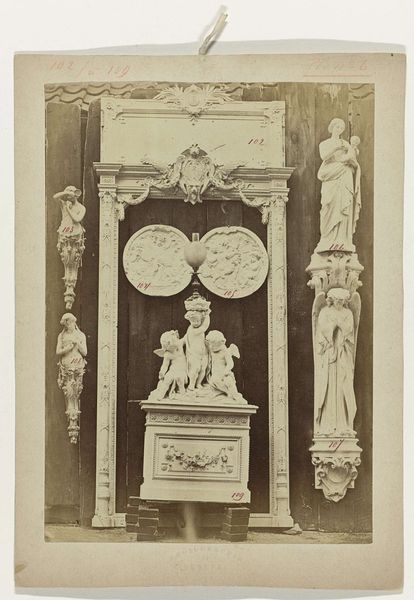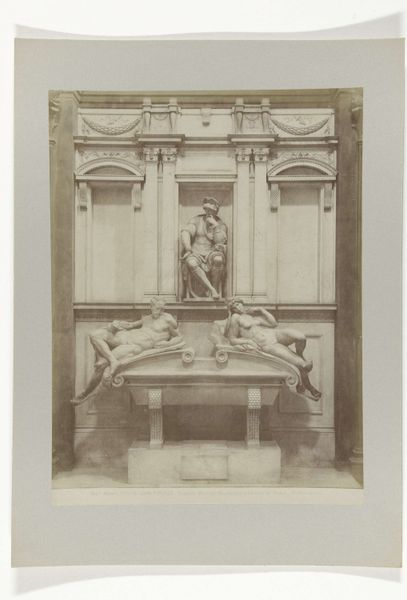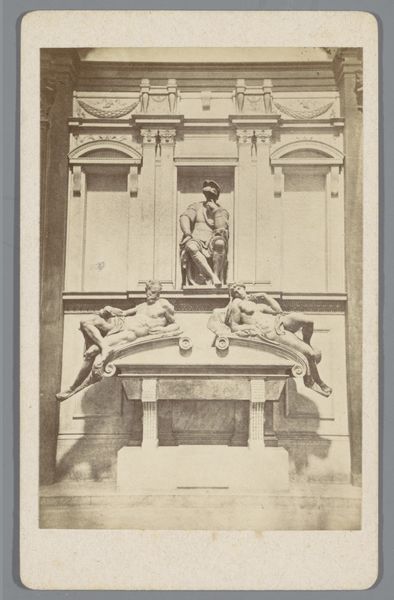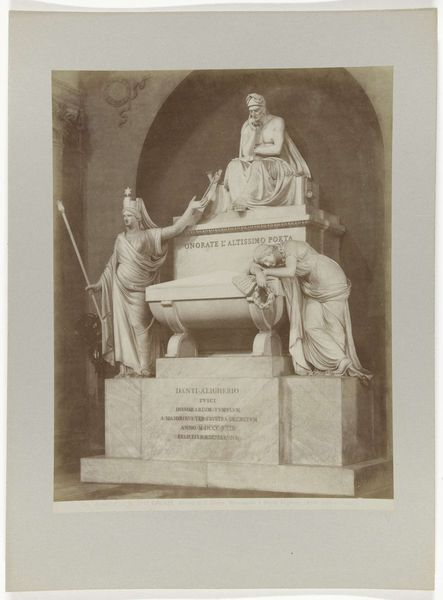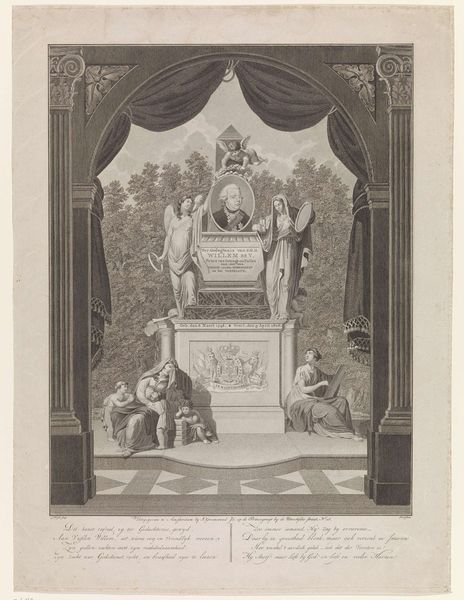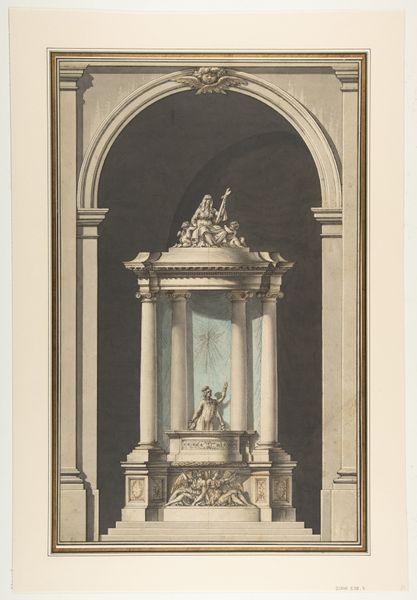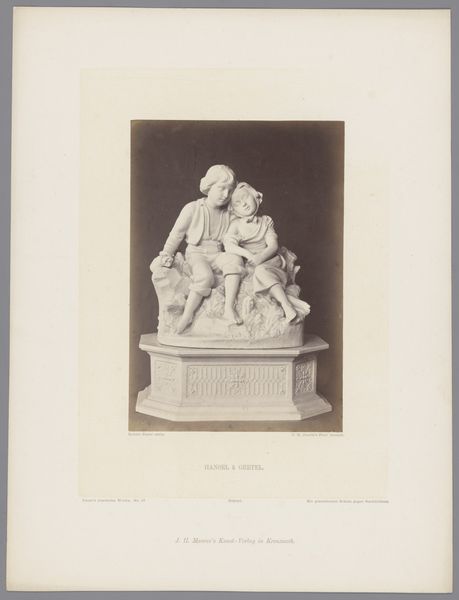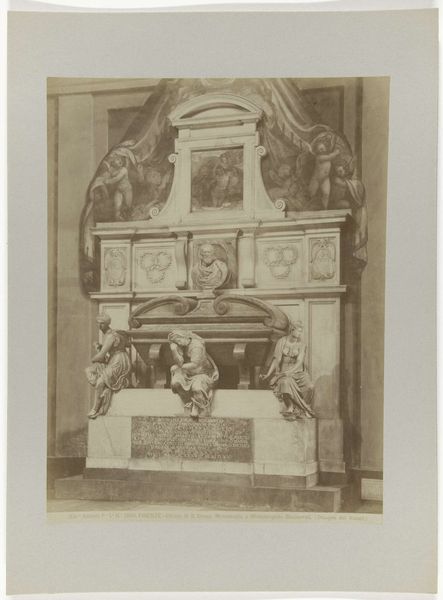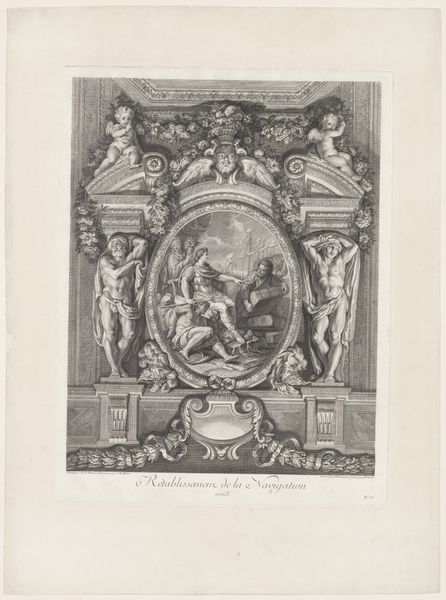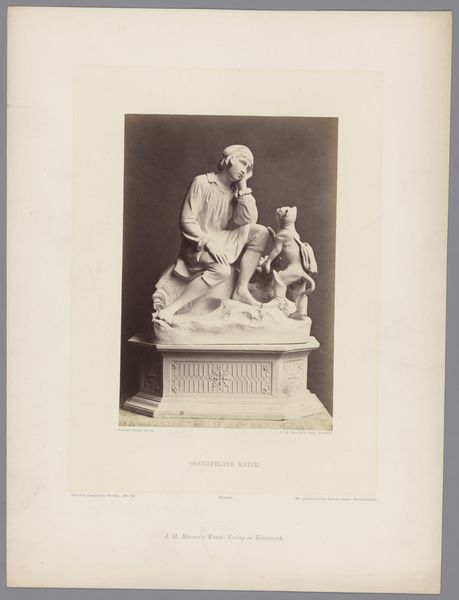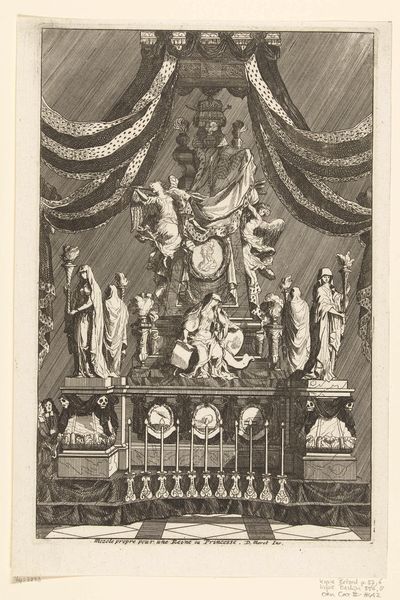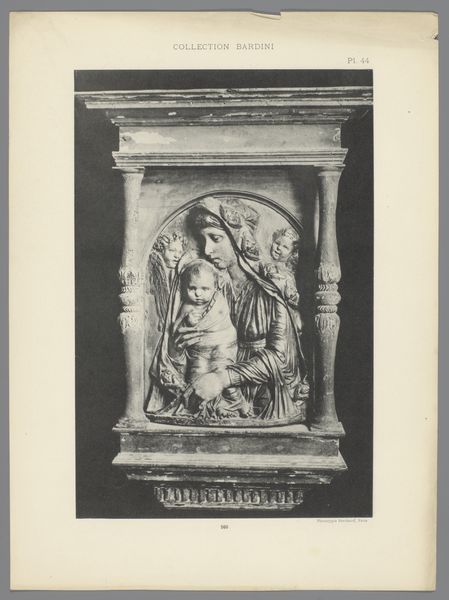
print, photography, sculpture
#
portrait
# print
#
photography
#
sculpture
#
19th century
Dimensions: height 260 mm, width 207 mm, height 277 mm, width 367 mm
Copyright: Rijks Museum: Open Domain
Curator: This photograph captures Giacomo Moreno's "Grafmonument op het Camposanto te Genua," taken by Alfredo Noack between 1891 and 1893. The monument resides, as the name suggests, in Genoa's monumental cemetery, the Camposanto. Editor: My initial thought is one of melancholy. The monochromatic rendering, typical of photographs of this era, gives the marble an almost spectral quality. It feels intensely private, a hushed moment made monumental. Curator: Absolutely, that’s the intention, I believe. Consider how cemeteries like the Camposanto became vital civic spaces during the 19th century. They functioned almost as open-air museums displaying wealth and commemorating bourgeois values. Memorials were increasingly sculptural. Editor: Making me think about the labour and skill involved. The sheer scale of this must have required a considerable workshop of artisans, quarrying the marble, transporting it, carving it... It becomes a testament to late 19th-century industrial capacity and funerary expenditure. Curator: Precisely, it illustrates the commercialization of grief. The Camposanto presented opportunities for sculptors and other artisans. These works are not only testaments to individual loss but also reflect prevailing attitudes toward death and public mourning fostered by the middle classes. This memorial visually reinforces acceptable expressions of grief and public remembrance. Editor: Also, there’s a sort of performance happening here, isn’t there? The figures are captured in a static embrace—a moment stylized for public display. Even in death, these subjects become symbols meant to solidify familial and bourgeois narratives. Curator: The setting also emphasizes the staging aspect. Camposanto became destinations, tourist spots where one would witness these grand spectacles, reaffirming not only life but social structure too. Editor: Thinking of it now, Noack’s photograph also plays a part in that dissemination, helping distribute Moreno’s craftsmanship while promoting Genua’s cultural prestige through photographic print. A commercial venture reflecting both material artistry and social aspiration. Curator: Indeed, examining this image illuminates intertwined strands: Noack's photography business, the socio-political aspects displayed in sculptural form by Moreno and consumed by a rising middle class hoping to reinforce power. It all becomes intertwined. Editor: Ultimately, this photo opens up so many avenues. I come away considering death and the labor of art both memorialized in commerce of production.
Comments
No comments
Be the first to comment and join the conversation on the ultimate creative platform.
